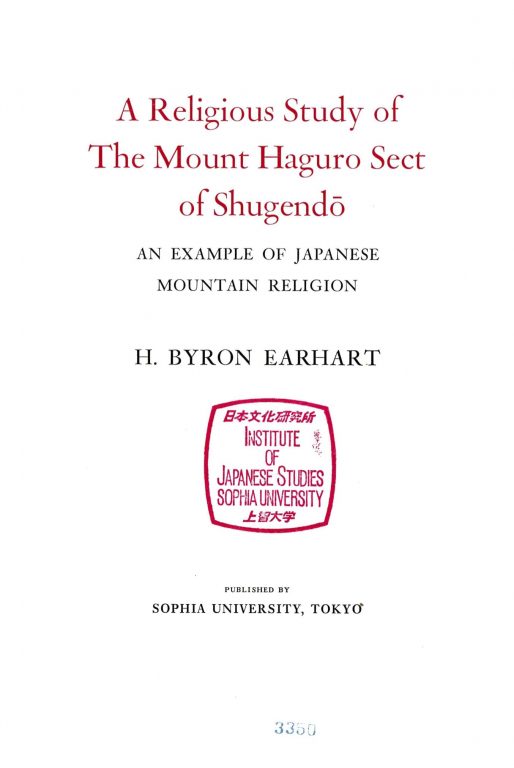A Religious Study of the Mount Haguro Sect of Shugendō: An Example of Japanese Mountain ReligionHarry Byron Earhart
Monographs (1970) pp. 1–214
Shugendō is a distinctive Japanese religious heritage which assimilated elements of many religious traditions and blended them into a particular ethos emphasizing religious practices in sacred mountains. Shugendō–the ‘way’ of mastering magico-religious powers within sacred mountains–arose when the religiosity surrounding ancient Japanese sacred mountains became infused with the asceticism, ritual, and magic of Buddhism and Taoism. Shugendō headquarters grew up on hundreds of mountains before the official proscription in 1872. But even proscription could not extinguish all the distinctive heritage of Shugendō, which survived in the temporary guise of Shinto and Buddhist forms. After 1945, with the enactment of full religious freedom, Haguro Shugendō reemerged as an independent religious organization. This book treats the historical development of Shugendō generally as background for a detailed description of the religious life in the Mount Haguro sect of Shugendō.
Because the heritage of Shugendō spans the entire religious history in Japan, and because the constitution of Shugendō presents a typically Japanese syncretistic blend of many traditions, an understanding of Shugendō sheds light on the complete religious scene in Japan. The peculiar blend of folk religion and Buddhism offers a case for comparison with other religious traditions, while the involvement of Shugendō in socioeconomic developments makes it of considerable importance for Japnese history in general.
1970. xvi + 214 pages.
Hardback. [Out of print]
